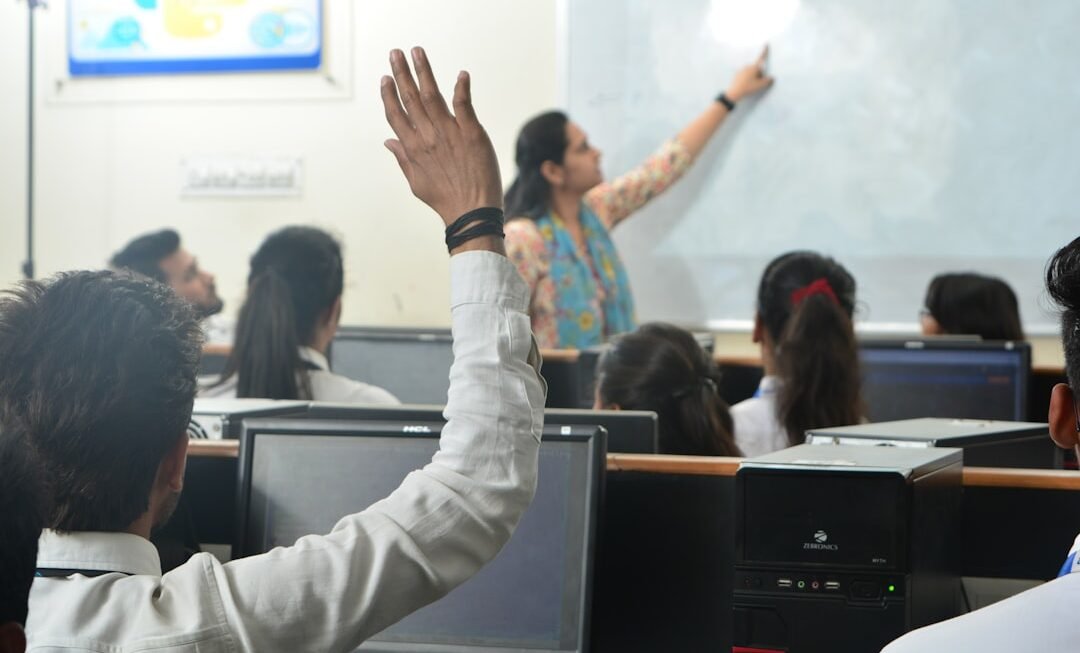In the rapidly evolving landscape of online education, the significance of localized content cannot be overstated. Localized content refers to the adaptation of educational materials to meet the linguistic, cultural, and contextual needs of specific regions or communities. This approach is particularly crucial in diverse regions like Asia, where a multitude of languages, traditions, and educational expectations coexist.
By tailoring content to resonate with local learners, online teaching platforms can enhance comprehension, foster engagement, and ultimately improve learning outcomes. For instance, a course designed for students in Japan may incorporate local examples, cultural references, and even humor that aligns with Japanese societal norms, making the learning experience more relatable and effective. Moreover, localized content plays a pivotal role in bridging the gap between global educational standards and local educational needs.
In many Asian countries, educational systems are influenced by unique historical and cultural contexts. For example, while Western educational models often emphasize critical thinking and individualism, many Asian cultures may prioritize collective learning and respect for authority. By recognizing these differences and adapting content accordingly, online teaching platforms can create a more inclusive environment that respects local values while still delivering high-quality education.
This not only enhances student satisfaction but also increases the likelihood of course completion and success.
Key Takeaways
- Localized content is crucial for online teaching platforms to effectively engage and cater to diverse cultural backgrounds.
- Cultural adaptation in Asia’s online teaching platforms presents challenges such as language barriers and differing educational norms.
- Strategies for effective cultural adaptation include understanding local customs, collaborating with local educators, and utilizing culturally relevant examples and materials.
- Language plays a vital role in localized content and cultural adaptation, as it directly impacts communication and comprehension for students.
- Case studies of successful cultural adaptation in Asia’s online teaching platforms highlight the importance of personalized learning experiences and inclusive curriculum design.
Challenges and Considerations for Cultural Adaptation in Asia’s Online Teaching Platforms
Cultural adaptation in online teaching platforms presents a myriad of challenges that educators and developers must navigate. One significant hurdle is the vast diversity within Asia itself. The continent is home to over 4.5 billion people, speaking thousands of languages and dialects, each with its own cultural nuances.
For instance, while English may serve as a lingua franca in some regions, it is not universally understood or accepted across all Asian countries. This linguistic diversity necessitates careful consideration when developing content that is both accessible and culturally relevant to various audiences. Another challenge lies in the varying educational philosophies and pedagogical approaches prevalent across different Asian countries.
For example, countries like Singapore may adopt a more progressive educational model that encourages inquiry-based learning, while others may adhere to traditional rote memorization techniques. This disparity can complicate the design of online courses that aim to cater to a broad audience. Educators must be acutely aware of these differences to ensure that their teaching methods align with local expectations and learning styles.
Failure to do so can lead to disengagement and frustration among students who may find the material either too challenging or not challenging enough.
Strategies for Effective Cultural Adaptation in Online Teaching Platforms
To effectively adapt content for diverse cultural contexts, online teaching platforms can employ several strategies that prioritize inclusivity and relevance. One effective approach is to involve local educators and cultural experts in the content development process. By collaborating with individuals who possess firsthand knowledge of the target audience’s cultural background, platforms can ensure that the material resonates with learners on a deeper level.
For instance, incorporating local case studies or examples from everyday life can make abstract concepts more tangible and relatable. Additionally, leveraging technology to facilitate real-time feedback from students can significantly enhance cultural adaptation efforts. Online platforms can implement features that allow learners to provide input on course materials, suggest improvements, or highlight areas where they feel disconnected from the content.
This iterative process not only empowers students but also enables educators to make data-driven adjustments that reflect the evolving needs of their audience. For example, if students express difficulty understanding certain cultural references or examples, educators can revise those elements to better align with local contexts.
The Role of Language in Localized Content and Cultural Adaptation
Language serves as a fundamental pillar in the realm of localized content and cultural adaptation within online teaching platforms. The choice of language not only affects comprehension but also shapes the overall learning experience. In multilingual regions like Asia, offering courses in multiple languages can significantly broaden accessibility and inclusivity.
For instance, platforms that provide content in both English and Mandarin can cater to a wider audience in China, where English proficiency varies widely among different demographics. Moreover, language goes beyond mere translation; it encompasses idiomatic expressions, colloquialisms, and cultural references that may not have direct equivalents in other languages. Effective localization requires an understanding of these subtleties to ensure that the intended message is conveyed accurately.
For example, a phrase that is humorous or motivational in one culture may be perceived differently in another. Therefore, it is essential for educators to work with skilled translators who are not only fluent in the target language but also possess a deep understanding of the cultural context.
Case Studies of Successful Cultural Adaptation in Asia’s Online Teaching Platforms
Several online teaching platforms have successfully navigated the complexities of cultural adaptation in Asia, serving as exemplary models for others in the industry. One notable case is Coursera’s partnership with local universities across Asia to offer region-specific courses tailored to local needs. For instance, Coursera collaborated with institutions in India to develop courses on topics such as Indian history and culture, which resonate deeply with local learners.
By leveraging local expertise and incorporating culturally relevant content, these courses have seen higher enrollment rates and improved student satisfaction.
For instance, Duolingo’s Japanese course includes lessons on traditional customs and etiquette, which are essential for learners seeking to understand not just the language but also the culture behind it. This thoughtful integration of cultural elements has contributed to Duolingo’s popularity among Asian learners and has set a benchmark for other language-learning platforms.
Impact of Localized Content and Cultural Adaptation on Student Engagement and Learning Outcomes
The impact of localized content and cultural adaptation on student engagement is profound and multifaceted. When learners encounter materials that reflect their cultural backgrounds and experiences, they are more likely to feel a sense of belonging within the learning environment. This emotional connection can lead to increased motivation and participation in online courses.
Research has shown that students who engage with culturally relevant content demonstrate higher levels of interest and retention compared to those who do not. Furthermore, localized content can significantly enhance learning outcomes by facilitating better comprehension of complex concepts. When educational materials are presented through familiar cultural lenses, students are more likely to grasp abstract ideas and apply them effectively in real-world scenarios.
For example, a business course that incorporates case studies from local companies allows students to relate theoretical principles to practical applications within their own context. This relevance not only aids understanding but also equips learners with skills that are directly applicable to their professional lives.
Future Trends and Innovations in Localized Content and Cultural Adaptation in Online Teaching Platforms
As technology continues to advance at an unprecedented pace, the future of localized content and cultural adaptation in online teaching platforms is poised for significant transformation. One emerging trend is the integration of artificial intelligence (AI) and machine learning algorithms to personalize learning experiences based on individual student profiles. These technologies can analyze student interactions with course materials and adapt content dynamically to suit their preferences and cultural backgrounds.
Additionally, virtual reality (VR) and augmented reality (AR) are set to revolutionize how localized content is delivered. By creating immersive learning environments that reflect local cultures and contexts, educators can provide students with experiential learning opportunities that transcend traditional classroom boundaries. For instance, a history course could utilize VR technology to transport students to historical sites relevant to their culture, allowing them to engage with the material in a more meaningful way.
Best Practices for Implementing Localized Content and Cultural Adaptation in Asia’s Online Teaching Platforms
To effectively implement localized content and cultural adaptation strategies within online teaching platforms in Asia, several best practices should be considered. First and foremost, conducting thorough market research is essential to understand the specific needs and preferences of target audiences across different regions. This research should encompass linguistic preferences, cultural values, educational expectations, and technological access.
Furthermore, fostering collaboration between educators, cultural experts, and technology developers can lead to more effective content creation processes. By bringing together diverse perspectives, platforms can ensure that their offerings are not only academically rigorous but also culturally resonant. Regularly soliciting feedback from students throughout the course development process can also help identify areas for improvement and ensure that content remains relevant over time.
Lastly, investing in ongoing professional development for educators is crucial for maintaining high standards of localized content delivery. Training programs focused on cultural competency can equip instructors with the skills needed to navigate diverse classrooms effectively. By prioritizing these best practices, online teaching platforms can create enriching learning experiences that honor the rich tapestry of cultures present across Asia while delivering high-quality education tailored to local needs.












